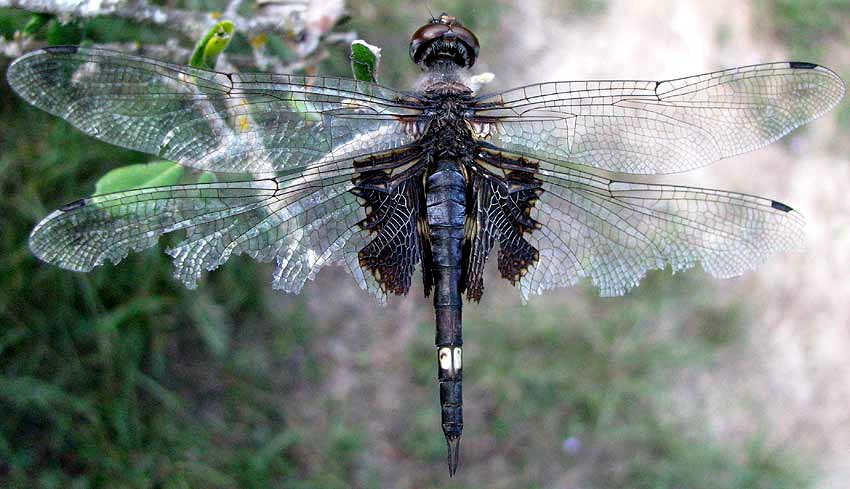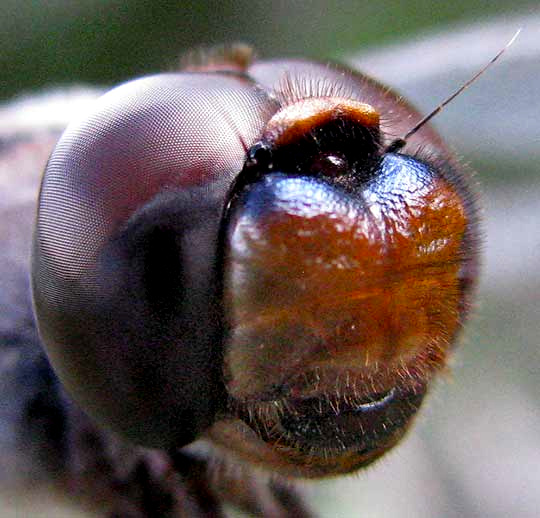Excerpts from Jim Conrad's
Naturalist Newsletter

from the October 21, 2012 Newsletter issued from the valley of the Dry Frio River in northern Uvalde County, southwestern Texas, on the southern border of the Edwards Plateau; elevation ~1750m (~5750 ft); N29.62°, W99.86°; USA
BLACK SADDLEBAGS DRAGONFLY
In mid morning, two stone throws from the little Dry Frio River, a dark dragonfly with a wingspan of four inches (10cm) perched on a twig level with our eyes. Her cellophane-like hindwings were so tattered and she was so quiet and disinterested in our presence that she gave the impression of being an old, battle-worn individual, one just wanting to be left alone. She's shown above.
With such conspicuous black markings at the wing bases and the white spots on the abdomen, I figured this would be an easy species to identify in my "Dragonflies through Binoculars" field guide, and that was true. She was a Black Saddlebags, TRAMEA LACERATA. Besides the larger size and slightly different black markings on the wing, females and juveniles display yellow-brown faces, as seen below:

There's a whole group of dragonflies known as saddlebags -- in North America seven species in the genus Tramea. They're called saddlebags because seen at a distance the black spots at their wing bases look like objects being carried at the dragonflies' sides. None of America's other saddlebag species has ours white abdominal spots.
This is a widely distributed species, from the Yucatan, Bermuda and the Bahamas to Baja California north throughout all but the US north-central states, plus it's barely in southern Canada, and on Hawaii.